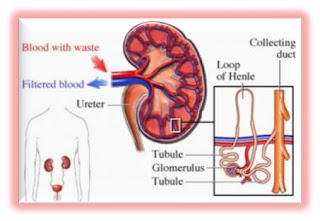Nursing Care Plan for Glomerulonephritis

Nursing Care Plan for Glomerulonephritis Glomerulonephritis is a type of kidney disease in which the part of your kidneys that helps filter waste and fluids from the blood is damaged. Symptoms of Glomerulonephritis Common symptoms of glomerulonephritis are: Blood in the urine (dark, rust-colored, or brown urine) Foamy urine Swelling (edema) of the face, eyes, ankles, feet, legs, or abdomen Symptoms that may also appear include the following: Abdominal pain Cough Diarrhea General ill feeling Fever Joint aches Muscle aches Loss of appetite Shortness of breath nlm.nih.gov Nursing Assessment for Glomerulonephritis Genitourinary Turbid urine Proteinuria Decrease in urine output Haematuria Cardiovascular Hypertension Neurological Lethargy Irritability Seizures Gastrointestinal Anorexia Vomitus Diarrhea Hematology Anemia Azotemia Hyperkalaemia

